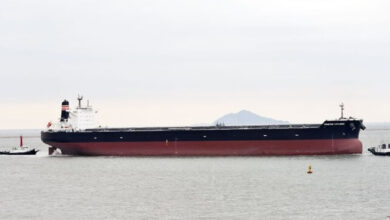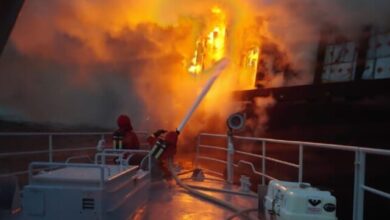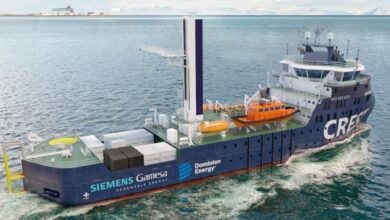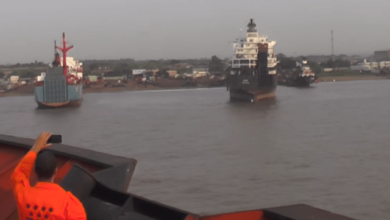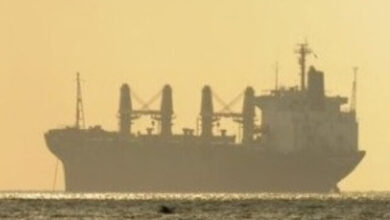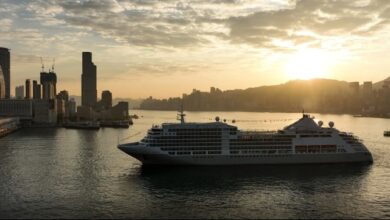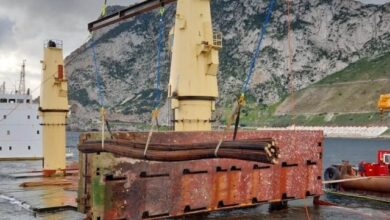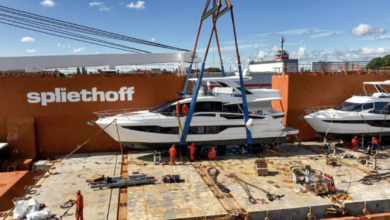Pablo Rodas-Martini writes : “A Balancing Act”!
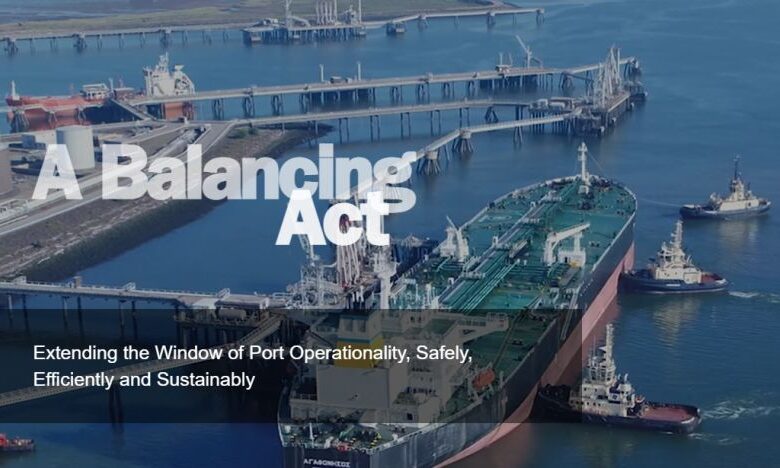
Pablo Rodas-Martin Author and speaker, bewitched by ships and ports,
“A Balancing Act” is taking place in the world’s biggest ports with enormous ships calling and the imperative that each arrival takes place with the utmost safety and efficiency.
Zero accidents and the highest possible throughput in the shortest possible time are the goals each major port is looking for. “A Balancing Act” is a White Paper with insights from two leading port industry experts, Terry O’Brien and Alec Don. I share today four issues that grasped my attention.

? Bigger ships mean heavier weight, and heavier weight means that mooring lines of berthed vessels have more potential energy stored and ready to part:
“If the integrity of a line is compromised (for example, frequent travel between extreme global climates from 45 degree heat to freezing temperatures can affect performance) then in the case of a break, the impact within the port is amplified, and the potential for fatalities increased due to snatched lines and peak loads.”
? Long waves, large tidal ranges and passing ships are three factors that could increase such tension for the mooring lines of larger vessels because each oscillation becomes more dangerous, risking parted lines or wharf damage:
“Long waves cause ships to move considerably in surge and sway, in a horizontal motion. If these motions build up, then they can cause lines to overload and then break which in turn disrupts port operations. The other factor that is becoming an increasing issue for ports around the world, as international shipping traffic grows alongside vessel capacity, is the impact of passing ships.”

? Digital solutions can make docking and mooring safer and faster while reducing the need to expand ports’ infrastructure. In simpler words, smart screens are cheaper and could become as efficient as grey investments:
“One well-known UK port authority reduced its CAPEX by adopting piloting and navigation software that removed the need to upgrade physical channel markers located in its harbor approach.
At the same time safety and accessibility were improved as pilots no longer relied on visible guidance but were able to access on-screen charts that reduced human error and functioned effectively in a range of MetOcean conditions.”
? The bigger the vessel, the more complex the spaghetti of mooring lines becomes. In other words, automated mooring, ideally ropeless automated mooring, is needed in ports receiving larger vessels:
“The mooring line layout is typically designed to have certain angles to work effectively, but as ports accommodate ships with much bigger and longer dimensions onto traditional structures, these typical mooring line arrangements are no longer effective.
This means less than ideal mooring configurations that both reduces the capacity of services and has safety implications.”
Rodas-Martin Author: Author and speaker, bewitched by ships and ports, passionate for the decarbonization of the maritime industry, always trusting in science, and with a firm grasp of maritime and port economics.
Read the White Paper here:
https://lnkd.in/dtvhNwSc




